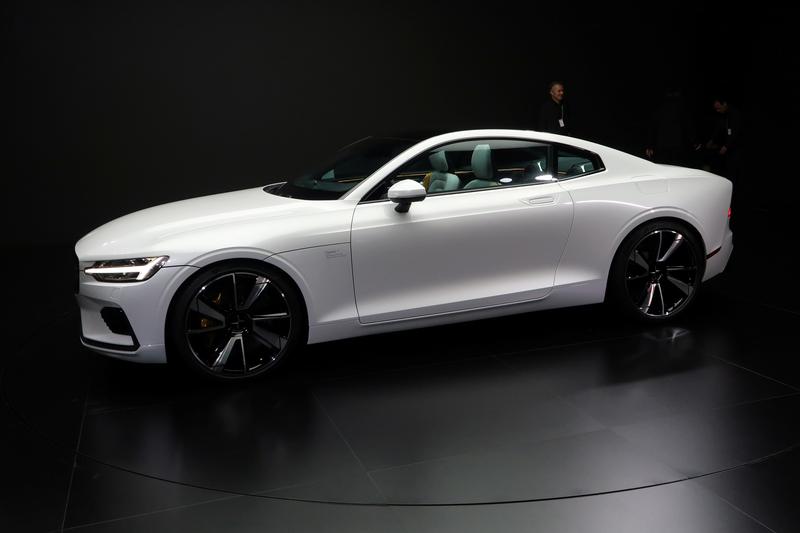By: Joe Harpaz Managing Director, Tax & Accounting Corporate Segment, Thomson Reuters
China is leapfrogging over the U.S. in its bid to take advantage of the automotive sector’s seismic shift toward electric vehicles.
In July, Volvo stunned the automotive industry with a bold announcement. Starting in 2019, every new car the company launches will have an electric motor. Hailed at the time as both the biggest commitment by any major car company to hybrid and battery-powered vehicle technology and a potential death knell for the internal combustion engine, the move seemed almost preposterously aggressive for a company that was on the brink of bankruptcy as recently as 2010.
But Volvo had a wild card: China. Volvo’s battery-powered vehicles will be produced initially in China, where its owner, Geely Automobile Holdings of China, already produces battery-powered cars for the Chinese market, currently the largest market for electric vehicles.
The full strategy didn’t really come into focus until October, when Volvo unveiled the new Polestar high-performance electric car at a press event in Shanghai. The company simultaneously announced plans to invest 5 billion yuan (USD$760 million) to build a new plant for the Polestar brand in Sichuan Province, and a new all-inclusive subscription service that will allow customers to use the car on-demand without the hassle of actual ownership.
“Our vision is that the Polestar subscription model and services that we offer will define the Polestar brand as much as our cars will,” Jonathan Goodman, chief operating officer at the Polestar brand said.

Whoa, Volvo! Remember when Volvos were the boxy-but-good brand of tweed-clad English professors and suburban soccer moms? Now they’re launching a sleek luxury four-seater hybrid coupe that will go head-to-head with Tesla in China with a sales model borrowed from Uber and Zipcar.
Beyond the “wow” factor of the announcement, however, Volvo’s recent moves make it clear just how profound an impact the electric vehicle revolution will have on the auto industry. It’s not just the cars, either. As the Volvo example illustrates, the industry is on the cusp of a major disruption that will involve equal parts technological innovation, new business models, and changing regulation. It will also be played out in an incredibly competitive global trade landscape that is constantly in flux as different countries, manufacturers, and suppliers vie for a competitive edge.
Welcome to the digital car arms race: the next generation of vehicles that are electric, always connected, self-driving, and subscription-based.
Consider, for example, Tesla’s announcement during the same month that it is setting up a manufacturing facility in Shanghai, officially becoming the first foreign automaker to build a wholly owned factory in the city, thanks to a special deal the company inked with the Shanghai municipal government.
That last part is really important. Until now, any foreign firm manufacturing products in China were severely limited by the Chinese government. Typically, that meant a foreign manufacturer that wanted to produce goods in China had to enter into a joint venture with a Chinese partner, sharing their technology and revenues with that partner, in order to avoid the steep 25 percent tariff the country places on foreign-owned manufacturers. That’s how every foreign auto manufacturer operates in China today.
Tesla’s deal is different because the manufacturing facility will be located in Shanghai’s free-trade zone, which will allow the company to maintain full ownership of its profits and its technology, a first for the auto industry. Under current rules, though, which Tesla is still reportedly trying to negotiate, any Teslas built in that free-trade zone would still be subject to the 25 percent tariff.
And that’s where things start to get complicated. Even with first-mover advantage in the electric vehicle space, direct access to the thriving Chinese consumer marketplace, and deep links to the Chinese supply chain, Tesla would be operating at a 25 percent cost disadvantage to Volvo in China due to current global trade rules that favor locally-owned companies.
This is a strategic move on the part of China. The country appears to have a sense that the current technological disruption that’s unfolding in the auto industry presents an opportunity to take a strong foothold in an industry it hasn’t yet conquered. As fossil fuel-powered vehicles that are bought or leased from a car dealership face the growing risk of going the way of the horse and buggy, China is positioning itself both politically and structurally as the premier destination for the auto industry version 2.0.
Contrast the approach taken by China to what’s been unfolding recently in the U.S. The House version of the proposed tax reform plan calls for an elimination of the $7,500 federal electric car credit, while the Senate version of the plan keeps the federal credit in place, effectively putting a major consumer enticement to buy electric vehicles in a state of legislative limbo.

This creates a tough situation for U.S. automakers. A major incentive to purchase electric vehicles in the U.S. is potentially going away. Meanwhile, China is doing everything it can to spur the adoption of electric vehicles, having implemented new regulations in September that will require electric vehicles to account for up to 8 percent of new vehicle sales by 2020. On the surface, that should make China look like the electric vehicle promise land, but for U.S. automakers, tapping into that market requires either swallowing hard to accept a 25 percent tariff or inking a deal with a local company that could be a competitor. Add the constant march of new technology to the mix and you can see why automakers are scrambling to develop electric vehicle strategies that can work globally.
GM and Ford recently unveiled plans to add a combined 33 electric vehicles to their lineups. Volkswagen has committed to launching 15 “new energy vehicles” in China. The list goes on.
Increasingly, it’s beginning to look like those manufacturers who get the electric vehicle formula right will need to do a lot more than develop great cars. They’ll need to have a mastery of the complexities of global trade, deep insight into how various regulatory reforms may impact supply and demand in different regions of the world, and the ability to adapt quickly when these dynamics change. China will loom large in this evolution. And if the U.S. isn’t careful, it could lose its lead in the auto industry as the ground shifts beneath it.
That’s a major change for legacy automakers and one that will no doubt result in a fair share of trials and errors. It’s also a huge risk for the U.S. because the trade agreements, trade policies, incentives, and public-private sector partnerships it forms today will play a critical role in determining the auto industry’s winners and losers tomorrow
